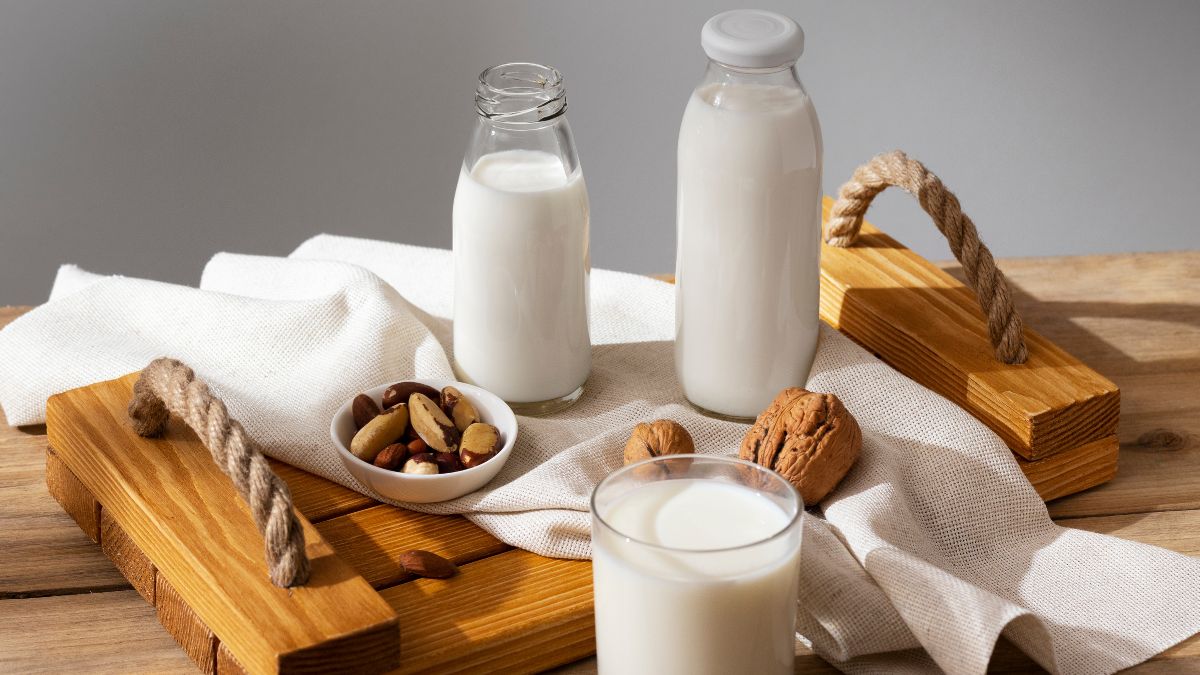Health & Fitness
Unveiling the Superiority of WellHealth Organic Buffalo Milk

Organic dairy products are popular among customers seeking products free of harmful chemicals, high in nutrients, and ethically sourced. The Organic Buffalo Milk from Well Health, a leading organic dairy brand, is a new product that promises to be both pure and nutritionally superior. In this piece, we’ll look at what sets WellHealth Organic Buffalo Milk apart from other dairy products on the market.
Purity Redefined
The dedication to purity is something that WellHealth is proud of.Their organic buffalo milk is sourced from grass-fed, free-roaming buffalo, ensuring no pesticides, synthetic hormones, or antibiotics are present. In addition to protecting consumer health, this dedication to organic agricultural techniques lessens the environmental impact of conventional dairy production, which in turn encourages sustainability.
Nutritional Superiority
In addition to being naturally healthy, buffalo milk is famous for its rich creaminess and unique taste. There is more protein, fat, and important minerals like calcium, phosphorus, and vitamin A in buffalo milk than in cow’s milk. WellHealth’s Organic Buffalo Milk offers a healthy alternative for those concerned about their health, maintaining nutritional value while being organically certified.
A Tag of Excellence
WellHealth Organic Buffalo Milk is a commitment to excellence and quality, crafted with ethical animal husbandry and rigorous processing to ensure purity and flavor.
Versatile and Flavorful
In addition to its healthy benefits, the versatile and flavorful Well Health Organic Buffalo Milk is a big draw for consumers. This milk adds a creamy texture and unique flavour to many different dishes, whether you’re making savoury sauces, sweet sweets, or just drinking it straight up.
The Conscious Choice
With more and more people thinking about where their food comes from and how it affects them, Well Health Organic Buffalo Milk is a conscientious option. People who choose this milk are showing that they care about both their health and the environment, as they are lending their support to dairy farms that use sustainable and ethical methods.
Conclusion
WellHealth’s Organic Buffalo Milk surpasses typical dairy products with its nutritional brilliance and purity, earning customers approval. Thanks to WellHealth’s organic principles, nutritional excellence, and quality commitment, customers may enjoy dairy products that are good for them, the environment, and society. Indulge in the sweetness and purity that is Well Health Organic Buffalo Milk—a label that captures the spirit of outstanding dairy.

Health & Fitness
Is Costco’s Fruit Smoothie Healthy?
Health & Fitness
Are Nut Thins Healthy? Unveiling the Nutritional Pros and Cons
Health & Fitness
Blisterata: Understanding and Managing the Skin Condition

Blepharata is a skin ailment that can affect anyone at any age; it causes the skin to develop blisters. Knowing blisterata’s history and how it impacts daily life is crucial for developing effective treatments and improving quality of life.
Introduction to Blisterata
A group of skin disorders commonly called blisteratta or blistering dermatosis is characterized by the development of fluid-filled blisters on the skin. Blisters can range in size, shape, and severity from little vesicles to larger bullae.Any part of the body is susceptible to blistering, but the feet, hands, and joints are particularly vulnerable because of their continual movement and exposure to abrasive surfaces.
Blisterata prevalence is influenced by several factors, including genetic predispositions, environmental factors, and current health conditions. Those with a family history of blistering diseases are at a higher risk of developing blisters, and environmental variables, such as exposure to irritants or allergens, can trigger flare-ups.
Causes of Blisterata
The wide variety of rosacea causes is due in large part to environmental variables, genetic predispositions, and lifestyle choices. Chemicals, allergies, severe weather, or genetic changes that affect the structure and function of skin proteins can make sensitive people more susceptible to getting blisters.
Blisterata symptoms can be worsened by certain lifestyle choices, such as smoking, being too exposed to the sun, and not taking good care of your skin. Autoimmune diseases, viral infections, and some medications increase the likelihood of blister growth.
Types of Blisterata
There are many different kinds of blisters, each with its own unique appearance and pathophysiology. Vesicular blisters are small, fluid-filled lesions that can form as a result of friction or tension. Systemic diseases or immune reactions can cause bullous blisters, which are bigger and more painful blisters. Pustular blisters, which are lesions filled with pus, are a common symptom of inflammatory skin conditions.
Symptoms of Blisterata
The symptoms of blisterata might vary in kind and severity. Indications, including redness, pain, and localized discomfort, are prevalent. A hallmark of blisterrata is the formation of fluid-filled blisters, which may rupture and then crust over. At its worst, blisterata can cause widespread blistering, fever, and generalized malaise.
Diagnosis of Blisterata
In order to establish the diagnosis of blisterata, clinicians conduct a thorough physical examination in which they search for blisters and make note of their shape and distributionDermatological investigations like skin biopsies and immunofluorescence can confirm diagnosis and identify blistering causes, while laboratory testing and medical history review can uncover root causes.
Treatment Options for Blisterata
Symptom alleviation, wound healing, and the avoidance of recurrence are the objectives of blisterata therapy. In mild cases of blisterata, topical treatments, including emollients and corticosteroid creams, can alleviate irritation and pain; however, in more severe cases, oral medications or skin grafting may be necessary.
Prevention of Blisterata
A healthy lifestyle that includes a balanced diet and stress management may help treat blisters successfully. Other precautions include sticking to a skincare routine, avoiding harsh chemicals and sun exposure, and generally being careful.
Impact of Blisterata on Quality of Life
Blister fungus causes itching and blistering, affecting mobility and quality of life. It can also cause significant mental distress, including feelings of shame, anxiety, and despair.Blisterata’s mental and emotional impact is exacerbated by societal prejudice and isolation, resulting from misconceptions and stigmatization of the disease.
Research and Innovation in Blisterata Management
New methods for controlling blisters have emerged as a result of developments in dermatological science and practice, such as wound care technologies, targeted therapies, and studies of blister growth causes and potential healing remedies.
Living with Blisterata: Coping Strategies
Blisterata coping includes actions to alleviate symptoms, build emotional resilience, and maintain one’s health in general. When dealing with life’s ups and downs, it helps to have a solid support system that includes medical professionals, loved ones, and friends.
-

 Technology4 weeks ago
Technology4 weeks agoWhat is ilikecomox?
-

 Technology1 month ago
Technology1 month agowavr-297: Revolutionizing Technology
-

 Business2 weeks ago
Business2 weeks agoIntroducing Coomersu: The Cutting-Edge Collaboration Platform
-

 News3 weeks ago
News3 weeks agoIntroduction to BlueFire Wilderness
-

 Business1 month ago
Business1 month agoChina SEO Xiaoyan
-

 Technology1 month ago
Technology1 month agoUnlocking SEO Success with Tanzohub
-

 Business1 month ago
Business1 month agoUnderstandingGPT-44X Amazon’s
-

 Technology4 weeks ago
Technology4 weeks agoZoomée: Revolutionizing Virtual Communication


